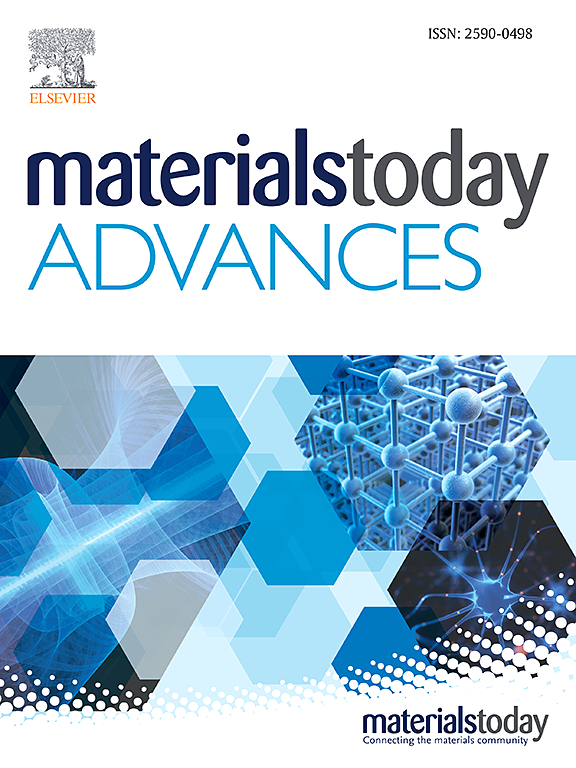Interfacing two-dimensional and magnetic topological insulators: Bi bilayer on MnBi[formula omitted]Te[formula omitted]-family materials
IF 8
2区 材料科学
Q1 MATERIALS SCIENCE, MULTIDISCIPLINARY
引用次数: 0
Abstract
Meeting of non-trivial topology with magnetism results in novel phases of matter, such as quantum anomalous Hall (QAH) or axion insulator phases. Even more exotic states with high and tunable Chern numbers are expected at the contact of intrinsic magnetic topological insulators (IMTIs) and 2D topological insulators (TIs). Here we synthesize a heterostructures composed of 2D TI and 3D IMTIs, specifically of bismuth bilayer on top of MnBiTe-family of compounds and study their electronic properties by means of angle-resolved photoelectron spectroscopy (ARPES) and density functional theory (DFT). The epitaxial interface is characterized by hybridized Bi and IMTI electronic states. The Bi bilayer-derived states on different members of MnBiTe-family of materials are similar, except in the region of mixing with the topological surface states of the substrate. In that region, the new, substrate dependent interface Dirac state is observed. Our calculations show rich interface phases with emergence of exchange split 1D edge states, making the Bi/IMTI heterostructures promising playground for observation of novel members in the family of quantum Hall effects.二维拓扑绝缘体与磁性拓扑绝缘体的交界面:MnBi[式省略]Te[式省略]族材料上的双层 Bi
非三维拓扑与磁性相遇会产生新的物质相,如量子反常霍尔(QAH)或轴子绝缘体相。在本征磁性拓扑绝缘体(IMTIs)和二维拓扑绝缘体(TIs)的接触处,预计会出现具有高且可调切尔诺数的更奇特状态。在这里,我们合成了一种由二维拓扑绝缘体和三维 IMTIs 组成的异质结构,特别是在锰铋钛族化合物顶部的铋双层结构,并通过角度分辨光电子能谱(ARPES)和密度泛函理论(DFT)研究了它们的电子特性。外延界面的特征是杂化 Bi 和 IMTI 电子态。除了与基底拓扑表面态混合的区域外,锰铋碲族材料不同成员上的铋双层衍生态是相似的。在该区域,我们观察到了新的、与基底相关的界面狄拉克态。我们的计算显示了丰富的界面相,并出现了交换分裂的一维边缘态,这使得 Bi/IMTI 异质结构成为观察量子霍尔效应家族新成员的理想场所。
本文章由计算机程序翻译,如有差异,请以英文原文为准。
求助全文
约1分钟内获得全文
求助全文
来源期刊

Materials Today Advances
MATERIALS SCIENCE, MULTIDISCIPLINARY-
CiteScore
14.30
自引率
2.00%
发文量
116
审稿时长
32 days
期刊介绍:
Materials Today Advances is a multi-disciplinary, open access journal that aims to connect different communities within materials science. It covers all aspects of materials science and related disciplines, including fundamental and applied research. The focus is on studies with broad impact that can cross traditional subject boundaries. The journal welcomes the submissions of articles at the forefront of materials science, advancing the field. It is part of the Materials Today family and offers authors rigorous peer review, rapid decisions, and high visibility.
 求助内容:
求助内容: 应助结果提醒方式:
应助结果提醒方式:


